The Best Times to Post on TikTok
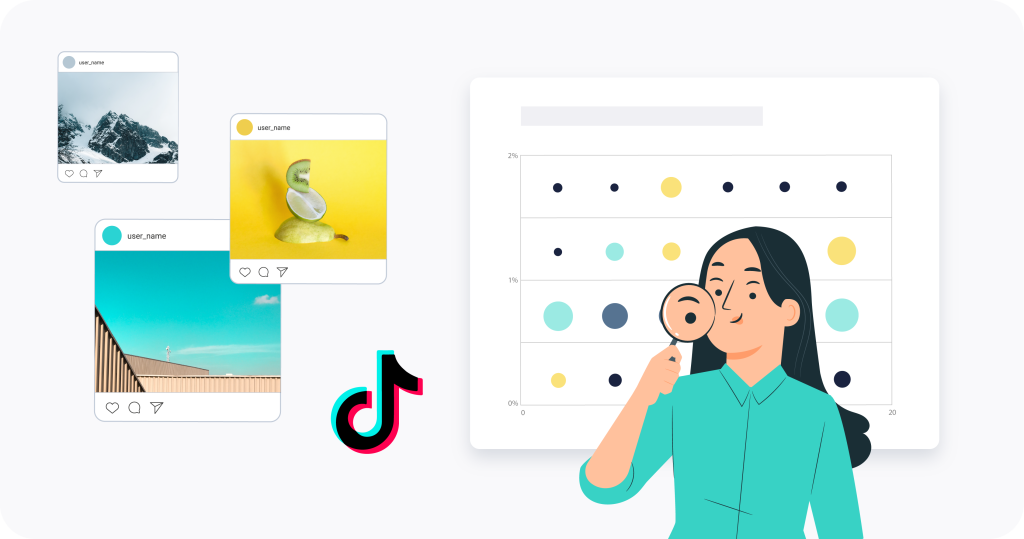
When are good times to post on TikTok? If you are active on TikTok or aspire to be an influencer, you have probably asked yourself more than once about when the best time to post would be. You may be tempted to find some data online that tells you when is it a good time to post on TikTok. This can sometimes be helpful if you are simply trying to find some quick information. However, if you are serious about building your TikTok presence, and especially if you are posting to help grow your business or want to grow your following and become an influencer, then you should consider taking a more data-driven approach.
So, what are the best times to post on TikTok? The question seems simple enough but, in reality, there is not a straightforward answer. When trying to determine when the best time to post on TikTok is, it is important to find out when your audience is most likely to engage with the content. This will maximize the likelihood of your video getting picked up by the TikTok algorithm and reaching the right audience. In this article, we will take you through the steps to find the best times to post on TikTok for your own profile using advanced data analytics.
Is there a Best Time to Post on TikTok?
TikTok is popular because it creates a highly personalized mix of content for every user. However, many creators may feel like they don’t really understand how the TikTok algorithm works and, therefore, they may think that there is nothing they can do to influence who will see their video.
Even though the exact mechanisms behind the TikTok algorithm are not public, there are a couple of things you have control over if you want to reach the right audience and grow your TikTok account. Optimizing your posting time will increase the chances of getting higher post engagement during the first few minutes and hours, which is a key criterion when it comes to how far the TikTok algorithm spreads your video. After all, you want your TikTok to be shown on as many users’ “For You” pages as possible.
You will find many articles out there mentioning specific best times to post on TikTok, and while those times may give very general recommendations, the actual times when your particular audience is most likely to engage with your post may be different. For those who run these studies, their suggestions will be geared more at the global best times to post on TikTok. Because of this, many content creators may find that the time their audience is online varies widely from the generally suggested global best times to post on TikTok.
Your TikTok profile is unique, and your best posting times are as well. Therefore, before committing to a posting schedule, it is important to do your research so you can find out what are the best times to post on TikTok for your own profile.

The Challenge with Finding the Best Days and Times to Post on TikTok
Knowing the best days and times to post on TikTok in general can be helpful. This is because some of these hours and days appear to be connected to higher engagement rates. However, your posts will achieve the highest engagement on TikTok not when most people are online on TikTok in total, but when the people who are most interested in your content are most active. This may be different from the generally held ideas related to the best times to post on TikTok. After all, you probably operate in a certain niche with a specific target audience.
If you are new to the video sharing platform and building an audience from zero, you might not have historical data that indicates the best days to post on TikTok that yield higher interaction with your videos. Whether you are just starting out on TikTok, or if you are looking for a larger data set to get more advanced insights based on many profiles similar to yours, there is an approach that can help you find when is a good time to post on TikTok. If you are taking TikTok seriously, it is important to know who your competitors on TikTok are, when and how much they are posting, and when your target larger audience is most active.
So how can you use data to get objective insights into when to post on TikTok? Let’s first address the simple way that may give you a quick answer, but also has its shortcomings.
Option 1: The “Do-It-Yourself” Approach and Its Drawbacks
TikTok offers creators some insights into the performance of their TikTok videos and can give you suggestions on the best days and times to post on TikTok. With a TikTok Pro account, you will be able to see an analytics section in your settings menu.
Your TikTok analytics will show you some information about your existing followers, for example their gender and location. Identifying where your audience resides can be helpful in finding out the best time to post on TikTok, especially when catering to a global audience across different time zones. Once you know where your audience is located, you can find out when they are active on TikTok. TikTok’s analytics lets you identify the hours and days when your existing audience was most active. However, this is limited only for the last 7 days.
You might think that by looking at this data, you will be able to clearly identify when the best time to post on TikTok for better engagement is. However, be careful. The above-mentioned times only show you when your followers are online, not when they are most likely to interact with your content.
Regarding your content’s performance, you might be able to find some insights in the TikTok analytics “content” tab, including total play time, average watch time, reach, and whether viewers found your content via your profile or their “For You” page. But again, these metrics will only be available for the last week as well as for your own content and your existing followers, so the insights you can get from this are very limited.
Another drawback of using only TikTok’s analytics section relates to not knowing the times when other profiles in your niche publish their best-performing content. By just using your own TikTok analytics, this information will not be available to you. If you are only starting out and have not collected a lot of data yet, you may be posting at the wrong time, and it could take you a while to find the best days and times to post on TikTok.
The good news is that all of these problems can be solved using advanced social media analytics tools.
Option 2: Researching the Best Times to Post on TikTok Using Advanced Analytics
Finding the best time to post on TikTok is in your own hands. You can use TikTok analytics but be limited in your analytical insights, or you can use an advanced social media analytics tool to help you analyze your competitors as well as other content creators in your niche. In this way, you will be able to gain valuable insights much faster than by just collecting data from your TikTok analytics week after week.
So, how do you go about determining what are the best times to post on TikTok for your business? There are 4 steps you need to consider:
- Choose the TikTok profiles you intend to analyze
- Select your timeframe
- Study the data output
- Set up your posting schedule and monitoring
Finding out the best times to post on TikTok is easy with an advanced social media tool. In discussing how to find the best time to post for your profile, we will be using the all-in-one social media tool, Fanpage Karma, so we can illustrate what your data output will look like and how to understand it. Importantly, Fanpage Karma offers unlimited profile tracking, which can greatly improve your analytical insights for posting times.One last note is that in going through these steps, we will be analyzing the TikTok profiles of some large European football clubs: AC Milan, Arsenal, Borussia Dortmund, FC Bayern, FC Barcelona, Juventus, Liverpool FC, Manchester City, Manchester United, Paris Saint Germain, Real Madrid, and Tottenham. This will help us illustrate how to find the best times to post on TikTok for these clubs.

Step 1: Choose the TikTok profiles you want to analyze
For the first step, you need to decide on which profiles you wish to analyze. It is important to make sure that all the profiles you are adding to your data set are relevant to your business. You should not include profiles that are not similar to your own, as this may skew your data. In fact, your main goal is to compare your TikTok channel to others that have a similar target audience and post similar content, since this is what will give you the most accurate insights about when you should post.
You should always ask yourself a few things to help you decide what profiles to analyze and how they relate to your potential audience:
- Where is my target audience located and which timezone(s) are they in?
- What is my industry or specific niche?
- Who are the most relevant content creators and competitors for my target audience? With whom will I be competing for their attention?
Always choose TikTok profiles in your niche that are targeting the same audience as you do. For instance, if you are smaller, regional football club, you probably don’t want to be included larger international clubs in your analysis, especially if they are outside your country or region. A larger data set will provide you with more reliable results, but be careful that the accounts you choose are relevant to your target audience. As a last step, you can add your own TikTok profile to the dashboard so that you can compare your results to your competitors’ results.
Step 2: Select your Timeframe
It is important to understand the timeframe you are analyzing for determining when is the best time to post on TikTok. There are several options or approaches that you can take in this regard. For instance, you may want to analyze general best posting times that use data collected throughout an entire year. This approach would give you a larger data set and can help you understand the best posting times more generally through a given time period.
Alternatively, perhaps you are interested in looking at when the best times to post on TikTok are on a monthly basis. This involves a smaller historical data set that focuses on a given month and will be more prone to variations from what happened in that given time period. This approach can be valuable if you are creating a large campaign for a specific holiday season and want to make sure you are planning your posting times accordingly.
Let’s illustrate the importance of this issue with an example. In analyzing profiles of the selected European football clubs, we will look at two different timeframes related to the data we are collecting. The charts below display circles in different sizes and colors. The bigger the circle, the higher the number of posts and greener the circle, the more interactions there are on these posts.
For our first analysis, we will look at the performance of the profiles for the month of September regarding the best times to post for these clubs. The data output below highlights times that have high post interaction rates. What’s more, you can also find times that not only have high average post interaction rates, but also where few posts are being published (look for the small green circles).
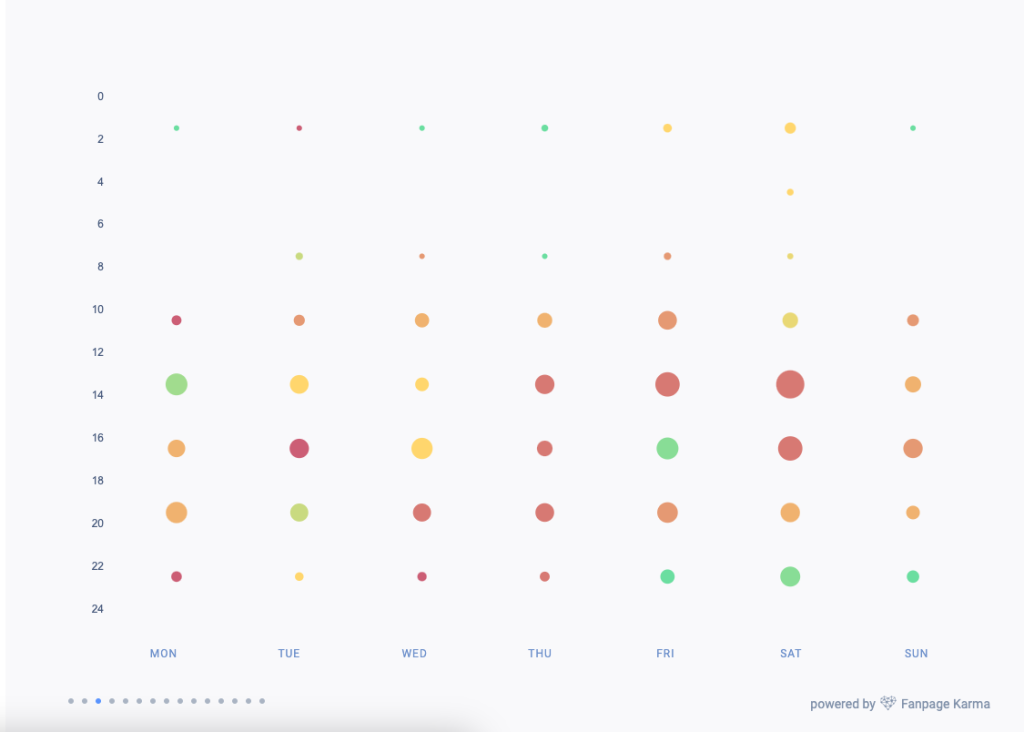
(September 2023, all profiles)
But what if you want to analyze a larger timeframe to find out when to post on TikTok? Let’s see how the results change if you focus on a 6-month period.
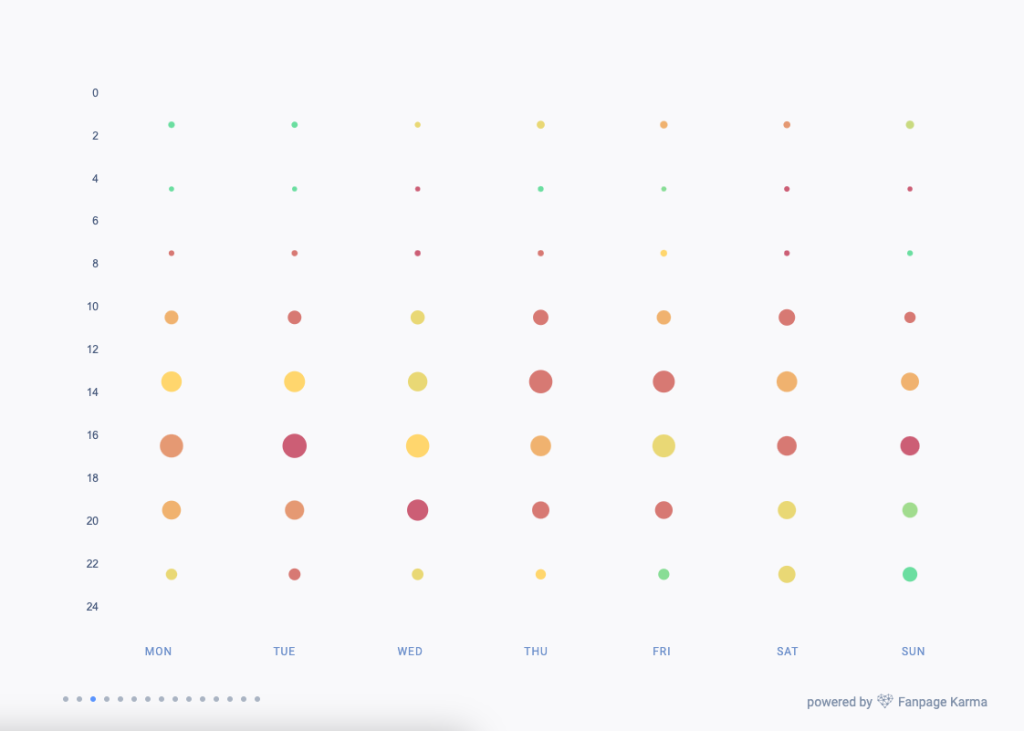
(April – September 2023, all profiles)
With a longer time period and a larger set of data to analyze, we can already see that our results have changed with new opportunities appearing as well as times that should maybe be avoided. Generally speaking, when trying to find the best days and times to post on TikTok, the more data you analyze, the more accurate your results will be.
As we have seen above, the timeframes you choose will affect your data output and your conclusions on when the best time to post on TikTok may be. Always be aware of what your aims are with your best time to post analysis, and make sure the timeframe you choose fits these aims.
Step 3: Study your Data Output
Once you have added all the relevant competitors and content creators to your dashboard, you can start analyzing them. In the content analysis part of the Fanpage Karma content tool, there is a “Best time to post” chart that displays the average post interaction rates for posts for certain times of the day and the week. As we mentioned above, the greener a circle is, the higher the average post interaction rate for that timeframe was, while the size of the circle indicates how many posts were at made at that time. This data output can give you powerful insights on when to post on TikTok today, tomorrow, or in the coming week.
Analyzing and understanding your data is crucial to bring about good results. Let’s look at the example below. As we covered in the first two steps, the profiles you choose to include in your data set as well as the timeframe of your analysis will affect your data output. However, you also need to be aware of the actual timezones that the profiles of your analysis are in and how that may affect your posting times.
Let’s briefly look at the best posting times for November 2023 for all the European football clubs mentioned above.
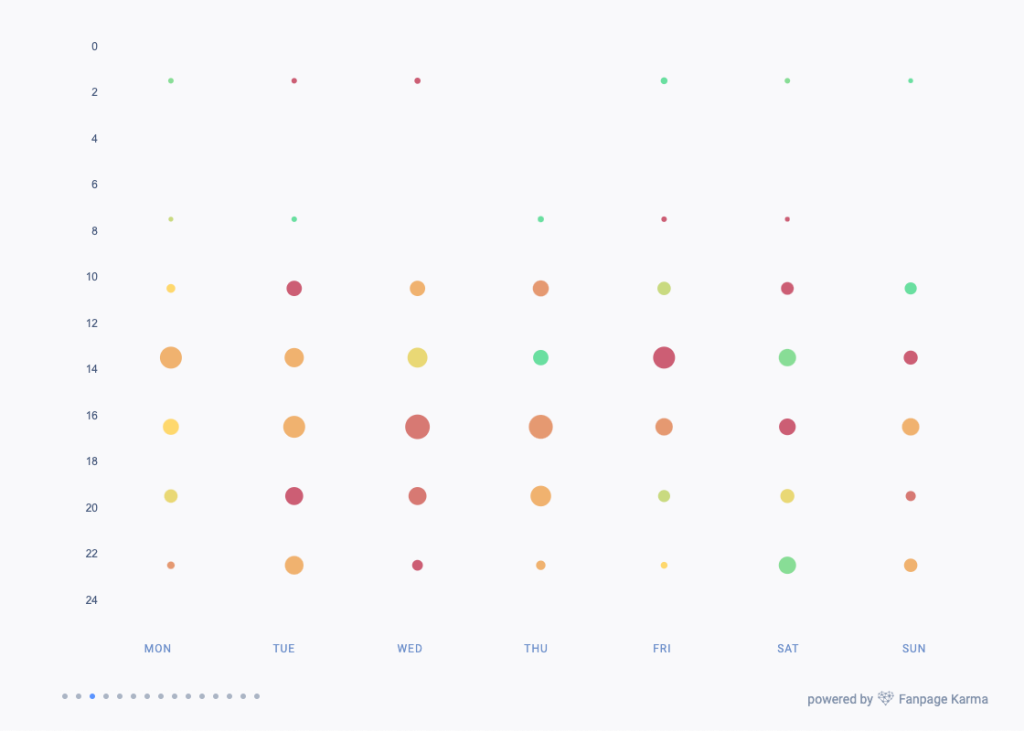
(November 2023, all profiles)
However, what happens if we change our data set to only include clubs that are located in Central European Time? This means that we will remove all the profiles from GMT from our data set and then study the new data output.
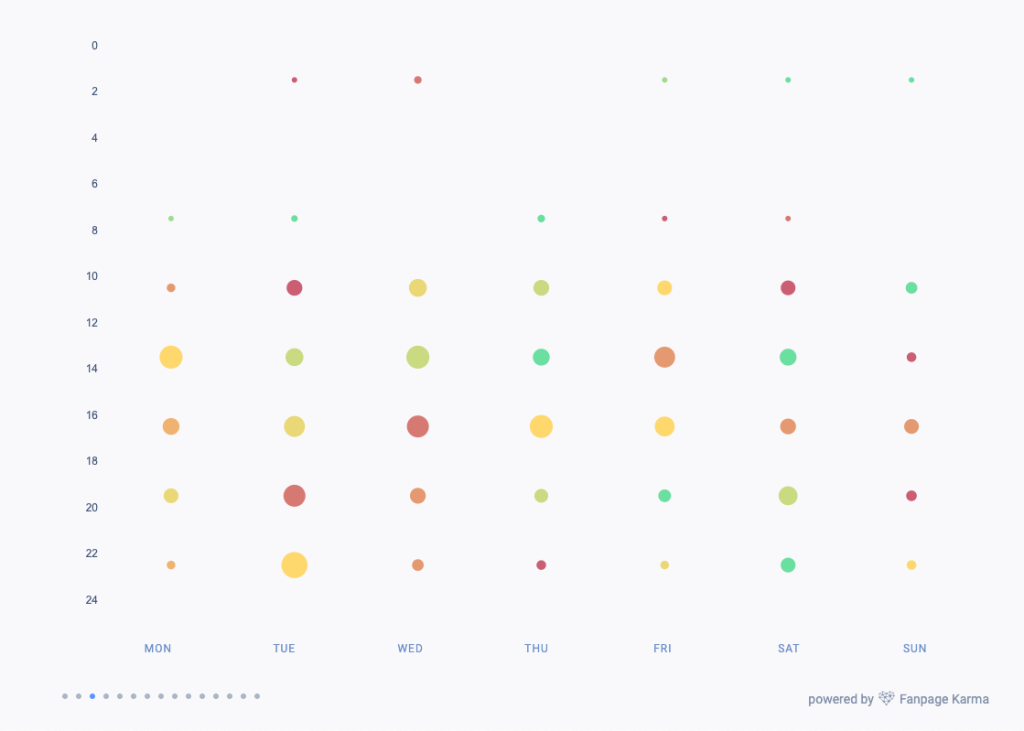
(November 2023, profiles using CET)
In our example, the best time to post on TikTok for a European soccer team with a target audience located in Central Europe would be Tuesday or Thursday morning, around 8 a.m.
Finally, we may want to select only for teams that are located GMT and see what the best times to post for those teams are. Below is how the data output when we select for only these teams.
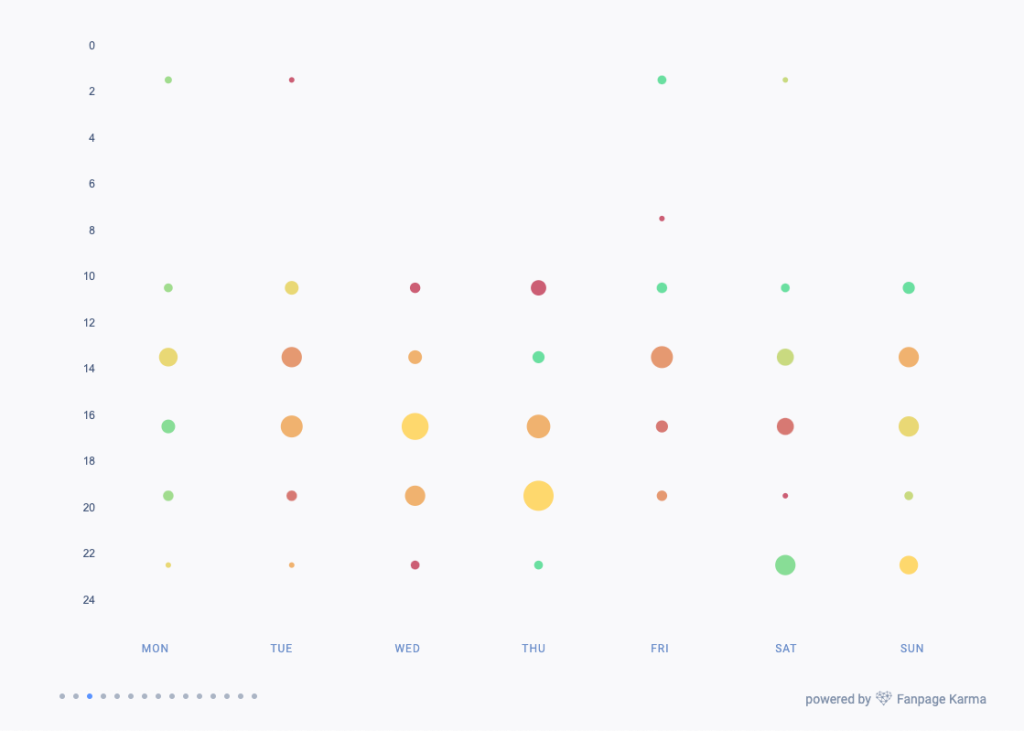
(November 2023, profiles using GMT)
As you can see from the examples above, seemingly slight adjustments in the data can lead to real changes in when you should consider to post. The important point here as well is to always know what timezones the profiles you are tracking are in so you can be sure that you are targeting the right audience in the right timezone.
What this example shows us is that if you are still wondering when the best time to post on TikTok is for your business, you will have to analyze competitors and content creators relevant to your target audience. Generally, the larger your data set and the timeframe you are analyzing, the better. However, there are reasons why you would want to limit your data size or to take a look at only a certain number of profiles. This could be because you are running a campaign specifically geared toward a single country or region.
You may also want to pay special attention to the amount of posts going out at one time. After all, you want to have as little competition as possible while getting the highest number of comments, shares, engagement, etc.
The main takeaway here is that you should adjust your data set and timeframe in order to gain the data insights that you need for your content plan. By analyzing not only your own data, but also your competitors, you can get much more advanced insights than simply following common wisdom about the best time to post on TikTok and seeing what happens. In this way, you will save a lot of trial and error.
Step 4: Set Up Your Posting Schedule and Monitoring
Once you know the best times to post on TikTok for your niche and target audience, use these insights to set up a personalized posting schedule. The advantage of using an all-in-one social media tool such as Fanpage Karma is that once you determine all the times you should post during a given time, you can easily schedule your TikToks for relevant days and times.
It is important to make sure to regularly monitor and analyze your posted content and adjust your strategy if necessary. Your audience behavior can change, and the actual content of your posts also has a major impact on whether they will interact with your content. Be sure to keep on monitoring your progress and make adjustments if you are not reaching your goals.
Conclusion
So, when is the best time to post on TikTok? As we have seen, this varies for each creator, depending on their location and audience. Use the tips shared in this blog post to find your personalized best times to post on TikTok.
And if you want to find your personal best times to post with Fanpage Karma, you can start your free trial now here or sign up for a free webinar. The power to boost your TikTok engagement is in your hands.









